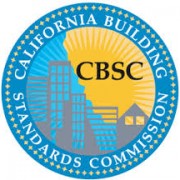Clients often ask if there are free copies of the International Building Code (IBC) or other free building code/accessibility resources on the internet. The answer is yes, there are…but you have to know where to look.
Where are they available?
A significant source of free building codes and accessibility resources is the non-profit corporation of Public.Resource.org and their affiliated organization, Law.Resource.org. They have accumulated, scanned, and posted to the internet, an immense cache of government documents. A concise list of some of the most commonly used building code and accessibility resources has been complied here, on the resources page of the Safranek Group website.
Feeling the pressure to make documents free, the National Fire Protection Association (NFPA) has embarked on making their documents “free” with several caveats, including registration with their organization. Their documents are available for viewing, on-line, but cannot be printed or stored.
The International Code Council (ICC) also has a number of building codes available on their website. Unfortunately, the “model” codes, such as the International Building Code are provided in a format that limits the amount of text on the screen, and does not emulate a page format, like a PDF. ICC’s website also hosts codes for some municipalities and states as well. Fortunately, many of these codes are PDFs that are in an easy to read page format. Unfortunately these PDFs are typically secured and are unable to be edited or printed.
Why make it free?
Carl Malamud with Public Resource.org has made it his mission to make government information readily available and transparent for all to see. His slogan of “Show me the manual” resounds with many individuals, who have suffered from “gotcha” requirements that suddenly materialized out of nowhere. For those caught in this circumstance, the all too common, after-the-fact refrain is …”If only I had known about it, I would have tried to comply with it”. It is this kind of exchange that has prompted Public Resource.org to embark on making available to the general public, the laws, regulations and standards that are commonly enforced by cities and states across the country.
When is somebody going to shut them down?
Good question. In 2013, there was an attempt by the Sheet Metal and Air Conditioning Contractors Association (SMACNA) to stop Public Resource.org from publishing safety standards (SMACNA’s being one of those) that had been incorporated into law. The Electronic Frontier Foundation stepped in to file a lawsuit on behalf of Public Resource.org, at which point SMACNA withdrew their complaint. More can be read here.
But the assault on Public Resource.org continues. On the heels of the SMACNA concession, the National Fire Protection Association (NFPA) and several prominent organizations filed a lawsuit with a federal court in Washington, D.C., alleging “massive copyright infringement” by Public.Resource.Org for publishing codes and standards that have been incorporated into law. Once again, the Electronic Frontier Foundation stepped in to aid in defending Public Resource.org. More can be read here.
If you enjoy using the information that Public Resource.org has made freely available, please go to their website and make a donation.
If you’re looking for a specific code or technical standard that can’t seem to be found, please contact me. I might just know where to find it.

